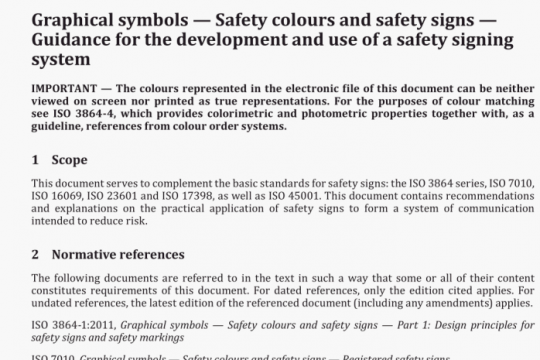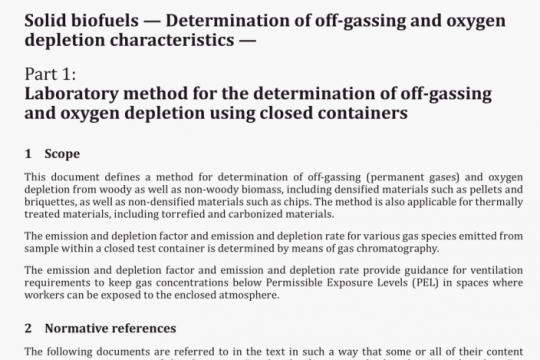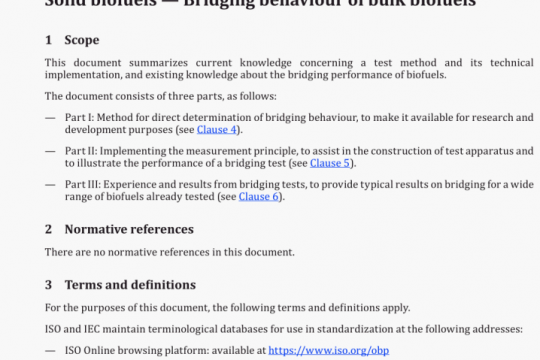ISO 19901-10 pdf free download
ISO 19901-10-2021 pdf free download.Petroleum and natural gas industries一Specific requirements for offshore structures – Part 10: Marine geophysical investigations.
This document provides requirements and guidelines for marine geophysical investigations. It is applicable to operators/end users, contractors and public and regulatory authorities concerned with marine site investigations for offshore structures for petroleum and natural gas industries.
This document provides requirements, specifications, and guidance for:
a) objectives, planning, and quality management;
b) positioning;
c) seafloor mapping, including instrumentation and acquisition parameters, acquisition methods, and deliverables;
d) sub-seafloor mapping, including seismic instrumentation and acquisition parameters, and non- seismic-reflection methods;
e) reporting;
f) data integration, interpretation, and investigation ofgeohazards,
This document is applicable to investigation of the seafloor and the sub-seafloor, from shallow coastal waters to water depths of 3 000 m and more. It provides guidance for the integration of the results from marine soil investigations and marine geophysical investigations with other relevant datasets.
NOTE 1 The depth of Interest for sub-seafloor mapping depends on the objectives of the Investigation. For offshore construction, the depths of investigation are typically in the range 1 m below seafloor to 200 in below seafloor. Some methods for sub-seafloor mapping can also achieve much greater investigation depths, for example for assessing geohazards for hydrocarbon well drilling.
There is a fundamental difference between seafloor mapping and sub-seafloor mapping: seafloor signal resolution can be specified, while sub-seafloor signal resolution and penetration cannot. This document therefore contains requirements for the use of certain techniques for certain types of seafloor mapping and sub-seafloor mapping (similarly, requirements are given for certain aspects of data processing). If other techniques can be shown to obtain the same information, with the same or better resolution and accuracy, then those techniques may be used.
Mapping of pre-drilling well-site geohazards beneath the seafloor is part of the scope of this document.
NOTE 2 This implies depths of investigation that are typically 200 m below the first pressure-containment casing string or 1 000 m below the seafloor, whichever is greatest. Mapping of pre-drilling well-site geohazards is therefore the deepest type of investigation covered by this document.
In this document, positioning information relates only to the positioning of survey platforms, sources and receivers. The processes used to determine positions of seafloor and sub-seafloor data points are not covered in this document.
Guidance only is given in this document for the use of marine shear waves (A.8.3.3), marine surface waves (A.8.3.4), electrical resistivity imaging (A.8.3.5) and electromagnetic imaging (A&i).
© ISO 2021 – All rights reserved I
Iso 19901-10:2021(E)
2 Normative references
The following documents are referred to in the text in such a way that some or all of their content constitutes requirements of this document. For dated references, only the edition cited applies. For undated references, the latest edition of the referenced document (including any amendments) applies.
ISO 1990 1-8, Petroleum and natural gas industries — Specfic requirements for offshore structures — Part 8: Marine soil investigations
3 Terms and definitions
For the purposes of this document, the following terms and definitions apply.
ISO and IEC maintain terminological databases for use in standardization at the following addresses:
— ISO Online browsing platform: available at https://www.iso.org/ohp
— IEC Electropedia: available at http://www.electropedia.org/
3.1 abyssal water
water depths greater than 3 000 m
3.2 acoustic impedance
seismic velocity multiplied by density
Note 1 to entry: Compressional-wave impedance uses compressional-wave velocity, and shear-wave impedance uses shear-wave velocity.
3.3 acoustic noise
unwanted acoustic signal
3.4 active tail buoy
buoy fitted with a global navigation satellite system transponder attached to the end of a streamer
3.5 airgu n
seismic source that injects a bubble of highly compressed air into the water
Note I to entry: Whereas single airguns can be used, it is common practise to deploy and fire several airguns in arrays to produce an acoustic pulse that has certain temporal and spatial characteristics.
3.6 aliasing
effect that causes signals to be misrepresented in recorded data as a result of undersampling
Note ito entry; (indersampling can be in time or spatial domain.
3.7 anisotropy
dependence of velocity on direction or upon angle of wave propagation
3.8 array
system of linked hydrophones or seismic sources arranged in a geometric pattern to increase sensitivity and/or directionality and/or in the case of a seismic source, the pulse characteristics.ISO 19901-10 pdf download.




